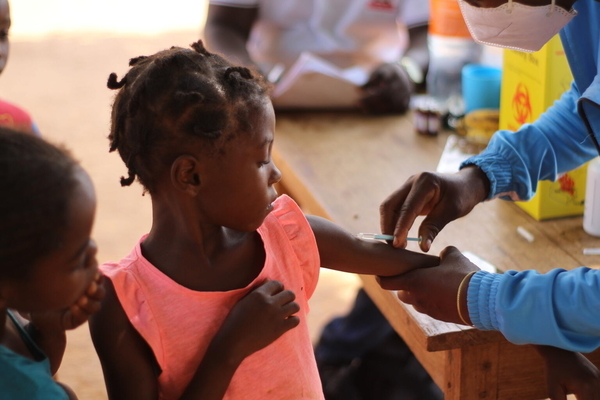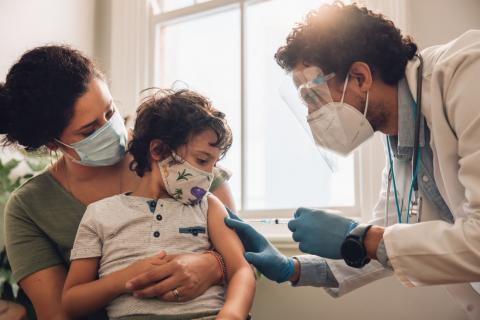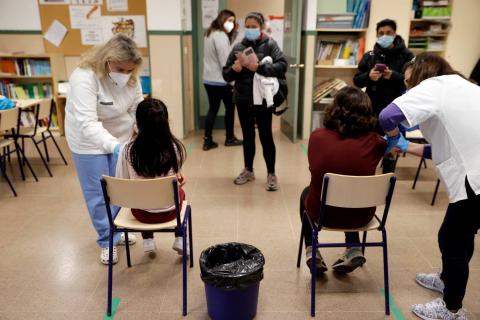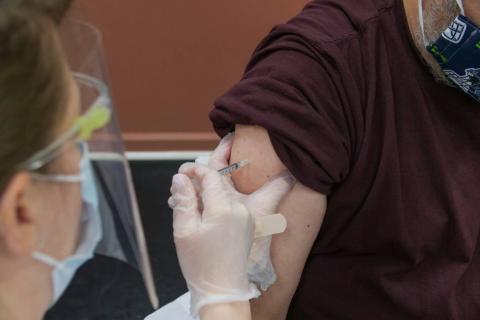Reaction: WHO and UNICEF data show global drop in childhood vaccination rates
Según datos de la OMS y UNICEF, 25 millones de niños no han recibido sus vacunas contra la difteria, el tétanos y la tosferina (DTP) a nivel global. Se trata de la mayor caída continuada en cobertura vacunal en casi treinta años.

Ángel Hernández - vacunas niños EN
Ángel Hernández Merino
Pediatrician and collaborator of the Advisory Committee on Vaccines, the Spanish Association of Pediatrics and the Spanish Association of Primary Care Pediatrics
The data released by UNICEF and WHO are appalling: 25 million children did not receive any dose of diphtheria, tetanus and pertussis vaccine in their first year of life in the world. Three doses of this vaccination in the first year of any child's life (DTP3) is a true indicator of the state of childhood immunization programs. A drop in this indicator should put the decision-makers in the countries concerned on their guard, as it reveals a major gap in one of the main population health prevention services: vaccination programs.
The covid-19 pandemic is having enormous effects on multiple aspects of individual and population health. Some of these impacts will be long-lasting and will be felt for many years to come. These are, for example, those on mental health and also all the health effects of general impoverishment and, as always, the further impoverishment of the most vulnerable. Childhood vaccinations are also being overwhelmed by the pandemic earthquake.
The trends of improving vaccine coverages that had been documented in recent decades up to 2019 were cut short in 2020 with the arrival of covid-19. It was expected that 2021 would be a year of recovery from the 2020 drop, but this has not been the case as these data published by UNICEF and WHO show us. The loss of vaccinations such as measles and rotavirus will have measurable consequences in terms of disease burden and deaths in a relatively short timeframe of months and a few years. In other cases, such as the human papillomavirus vaccine, it will have longer-term consequences. The latter vaccination, which is proving extraordinarily difficult to implement in low-income countries as a whole, will continue to be a pending issue in the world because of the gap between upper-middle-income countries and the rest.
The increase in vaccine-preventable diseases also has two new consequences: on the one hand, at the level of the family economy, due to the suffering and death in families with the need to ensure the functional capacity of all their members, and, at the general level, due to the need to devote part of the scarce health resources to their care, which detracts from other health needs. In other words, it reduces the functional and social capacity of families and compromises the capabilities of the healthcare system.
We should not be tempted to think that this is only a problem of "distant" countries, of countries with low human development indices, that we are free from the effects of the pandemic on vaccination coverage. High-income countries have also been affected. We have seen a worsening of the coverage of some vaccinations in, for example, the U.S. And our country, with a very different health service delivery system, is not free from this effect of the pandemic either.
In 2020 we could see a worsening of the coverage of some vaccinations that recovered, at least in part, soon. But we do not have good information on these aspects. We will soon know the situation of vaccination coverage in 2021 and we will be able to know if progress has been made in these aspects. One of the most relevant gaps is that of knowing the vaccination coverage at the levels of counties, provinces, localities and even neighborhoods or other units of measurement of greater detail than the autonomous community and national levels included in the official figures.
At the international level, we must work to promote and collaborate with the extension of vaccinations to all corners of the world. At the national level, exploring vaccination coverage in smaller geographical and population units (a good vaccination coverage figure at the autonomous community level does not imply that there are localities or population groups with insufficient coverage, which feed pockets of undetected susceptible population).
África González - vacunas niños EN
África González-Fernández
Professor of Immunology at the University of Vigo, researcher at the Galicia Sur Research Institute (IIS-GS) and member of the RAFG
The covid-19 pandemic has been a challenge in our recent history, with the highest rate of infection by a virus and its variants known so far. International mobilization, the development of vaccines in record time for the SARS-CoV-2 virus, antivirals and better management of seriously ill patients has meant that industrialized countries are returning to a certain degree of normality, with more controlled hospital admissions and, above all, a reduction in the number of seriously ill patients and deaths.
But there are very serious collateral effects of the pandemic that are not so evident. This, together with other factors, is leading to children in many countries not receiving vaccines that can protect them from very serious diseases such as diphtheria, tetanus, pertussis and other pathogens. This situation is becoming critical in some countries, with a significant decline in the number of children vaccinated despite the availability of vaccines.
This drop in prevention can have fatal consequences, with an increase in illnesses in children with important sequelae or even death, which could be avoided with the use of vaccines.
The World Health Organization and UNICEF are calling on the international community to coordinate their efforts, funding and whatever else is necessary to vaccinate all children in need.
Vaccination, along with hygiene and antibiotics, are the measures that save the most lives every year. We have in our hands the most effective and cheapest solution to improve the health of millions of children.
José Gómez Rial - vacunas niños EN
José Gómez Rial
Head of the Immunology Department at the Complejo Hospitalario Universitario de Santiago de Compostela (CHUS), Servicio Gallego de Salud (SERGAS)
It is a paradox that, at a time when a vaccine is allowing us to emerge from a pandemic that has caused more than 6 million deaths worldwide, we are witnessing the greatest drop in vaccination coverage of other vaccines in three decades.
Although the reasons for this drop are related to the disruption in access to vaccines caused by the pandemic, as the WHO rightly points out, we must continue to build confidence in vaccination through evidence-based communication and combat misinformation, which in my opinion is now the greatest danger we face: losing confidence in vaccination, which has saved so many lives in the history of mankind.
Quique Bassat - vacunación OMS
Quique Bassat
Director General and ICREA Research Professor at the Barcelona Institute for Global Health (ISGlobal)
The indirect consequences of the pandemic in low-income countries are starting to become visible. Interruptions to the expanded programme on immunisation, due to restrictions imposed by covid, have caused a drop in vaccination coverage among the most vulnerable population, children. Difficulties in accessing routine vaccines, which save thousands and thousands of lives each year, have disastrous consequences in early childhood, and in addition to being associated with epidemic outbreaks (such as measles), leave children unprotected and vulnerable to entirely preventable diseases. Governments should understand that the direct consequences of covid in children are far less severe than the indirect consequences of not giving them access to vaccines.



